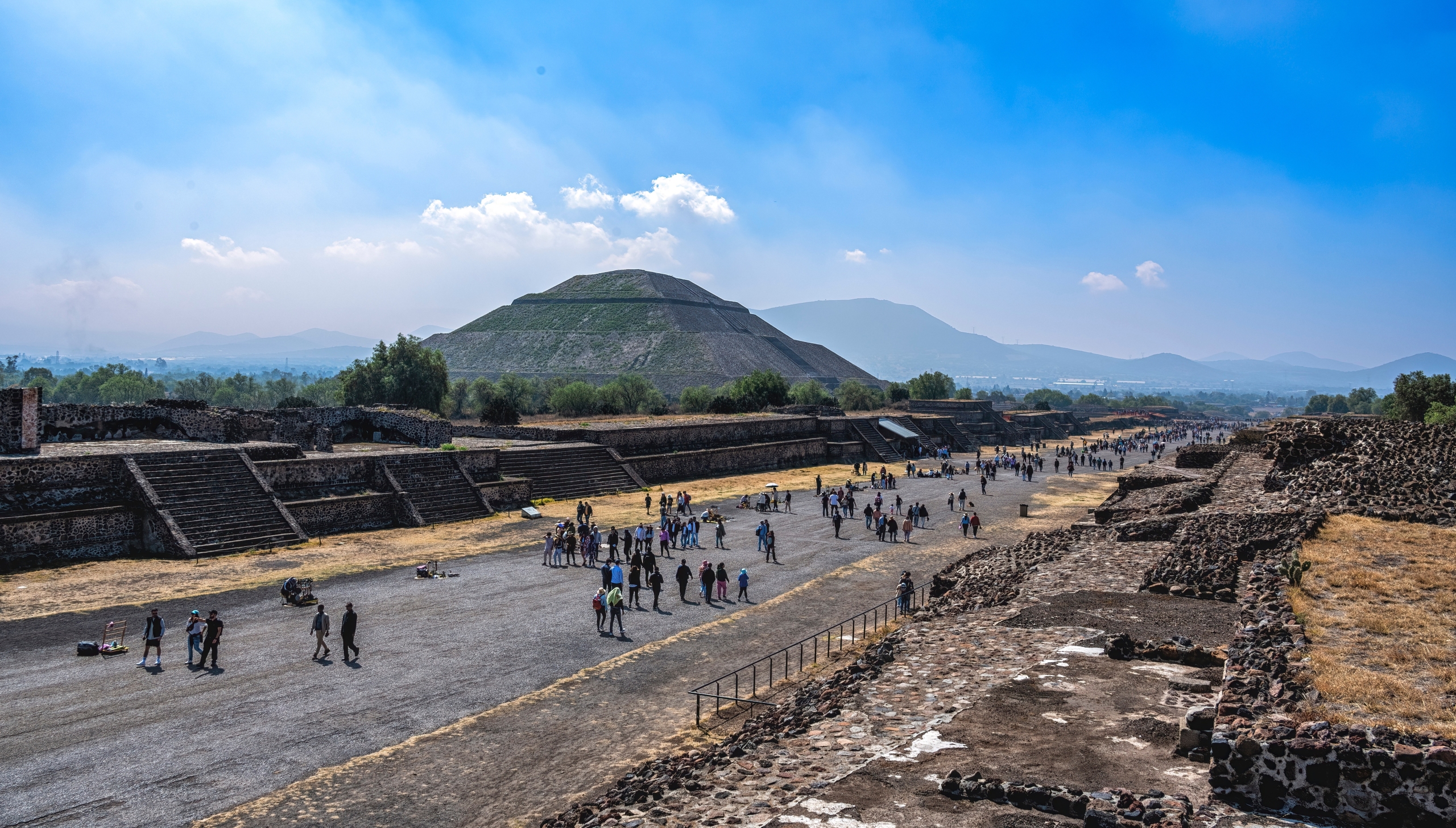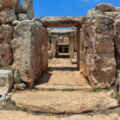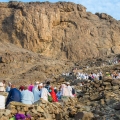Modern tourists who gaze in awe at the towering pyramids of Teotihuacan—or shudder at the thought of ancient human sacrifices—may not realize that this was once a sacred site of pilgrimage. Beneath these practices, which today seem unthinkable, lay a deep religious logic and a vision of the cosmos that shaped an entire civilization.
By the time the Mexica—known today as the Aztecs—entered the Valley of Mexico in the 13th century CE, the immense ruins of Teotihuacan had already stood abandoned for centuries. Its broad Avenue of the Dead, flanked by monumental pyramids and aligned with cosmic precision, spoke of a world that preceded theirs in both time and ambition.
To the Mexica, Teotihuacan was not a ruin but a sacred relic, a place of mythic resonance where the gods had once shaped the cosmos. They called it Teotihuacan, often translated from Nahuatl as the place where one becomes a god or the birthplace of the gods. For them, it was a site not only of memory but of pilgrimage—a center of orientation in a vast and unstable world.
A Sacred Geography
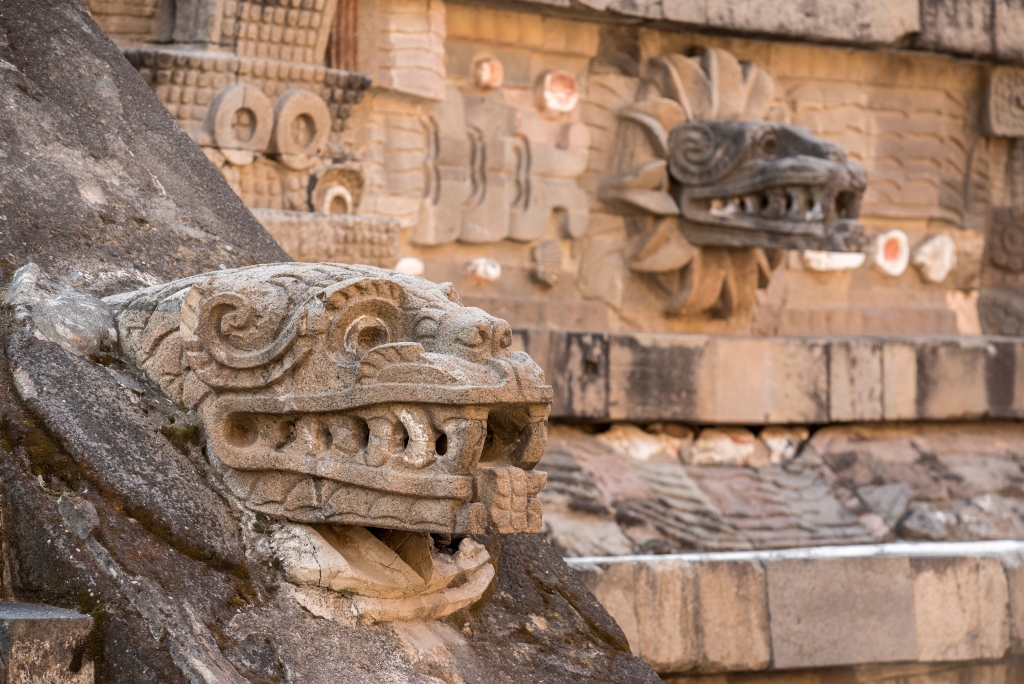
Located around 40 kilometers northeast of modern-day Mexico City, Teotihuacan reached its height between 200 and 600 CE. With a population estimated at over 100,000, it was one of the largest cities in the ancient world. Yet by the time of the Mexica ascendancy centuries later, the city had long fallen into decline. Its original builders were unknown to the Aztecs, which further magnified its mythic status. They reimagined Teotihuacan as the setting of a primordial act: the creation of the Fifth Sun, the present cosmic age in Aztec cosmology.
According to Mexica mythology, the gods had convened at Teotihuacan after the destruction of the previous sun (there had been four prior cosmic ages, each ending in catastrophe). Here, in the darkness left by the last collapse, they held council to decide who would reign as the new sun. Two gods – Nanahuatzin, humble and diseased, and Tecuciztecatl, wealthy and proud – sacrificed themselves by leaping into a sacred fire. From this act, the Fifth Sun was born, and with it, time resumed. But the sun remained motionless until the other gods also gave their lives, setting the cosmic wheel into motion through self-sacrifice.
This myth is foundational to Mexica cosmology and gave Teotihuacan a unique place in the spiritual geography of the empire. It was a cosmological axis, the site of cosmic renewal, and thus an essential destination for ritual pilgrimage.
Pilgrimage and Power
For the Aztecs, pilgrimage was both religious devotion and imperial ritual. The Mexica state, centered in Tenochtitlan, was itself structured as a replica of the cosmos. Its temple precinct mirrored the layered universe: the vertical axis connecting Tlalticpac (the earthly plane), Tlalocan (the watery underworld), and Ilhuicatl Tonatiuh (the celestial realm of the sun). Movement through space, especially toward sacred sites, mirrored movement through these cosmic layers.
Pilgrimage to Teotihuacan reaffirmed this structure. Groups of priests, nobles, and sometimes warriors would travel to the ruins to perform rituals that invoked the original sacrifices of the gods. Offerings, especially of fire, blood, and symbolic objects, were made at the Pyramids of the Sun and Moon. These monumental structures aligned not only with each other but also with solar and lunar cycles, reinforcing their roles as cosmic instruments.
The Pyramid of the Sun, the largest in Teotihuacan, was thought to sit atop a sacred cave – possibly a natural lava tube – believed to be a symbolic womb or place of emergence. Caves held deep significance in Mesoamerican cosmology, representing the entrances to the underworld and places of origin. Pilgrims might enter such spaces or circle them as part of ritual reenactments of birth, death, and renewal.
Teotihuacan’s power as a pilgrimage site thus stemmed not from a single deity, but from its role in a multi-deity, multilayered cosmology that demanded motion, offering, and reenactment.
The Pantheon: Forces in Motion
To understand Teotihuacan’s religious importance to the Mexica, one must grasp the structure of their pantheon. Unlike rigid, hierarchical deity systems, the Aztec pantheon was fluid and overlapping, with gods often possessing multiple aspects, shifting names, and regional interpretations. They were forces, more than personalities – each associated with natural elements, temporal cycles, and human actions.
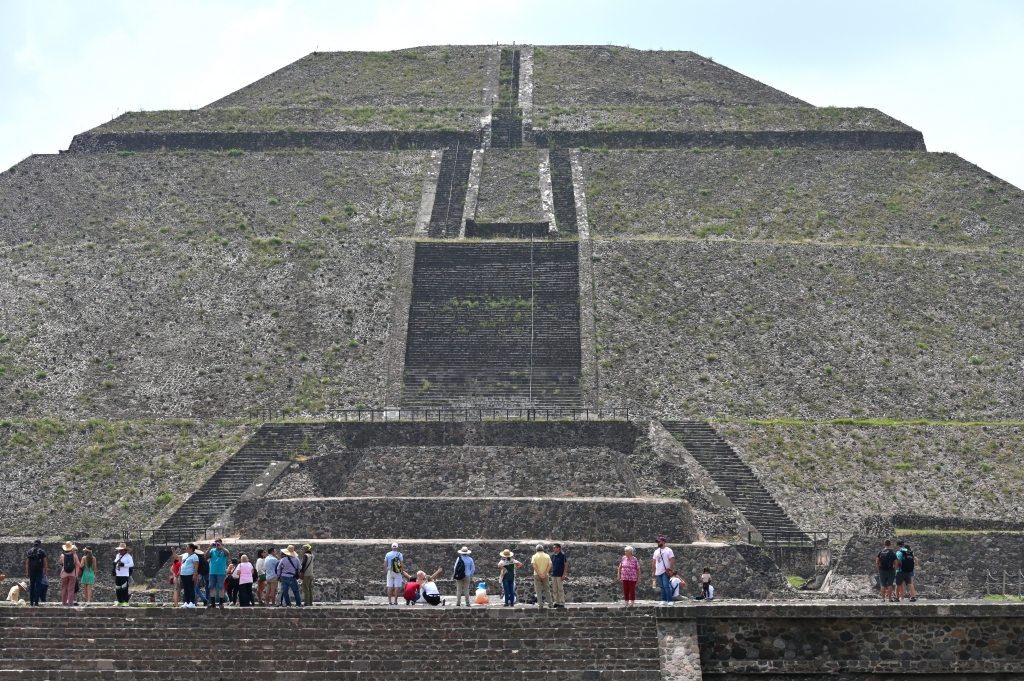
At the center was Huitzilopochtli, the god of the sun and war, whose daily battle across the sky mirrored the Mexica’s martial ethos. Yet he was only one among many. Tlaloc, god of rain and fertility, demanded child sacrifices at highland shrines to ensure agricultural abundance. Quetzalcoatl, the feathered serpent, symbolized wind, learning, and priestly authority. Tezcatlipoca, the smoking mirror, governed fate, conflict, and transformation.
Each deity was linked to tonalli (day-signs), calendrical cycles, and cosmic directions. Religion was thus deeply integrated into space and time. Pilgrimage to Teotihuacan meant engaging with these layers—honoring not a single god, but the act of divine emergence itself.
Memory and Motion
Pilgrimage, in this context, was a dynamic memory practice. By physically moving through the sacred geography of the Valley of Mexico – by visiting Teotihuacan – pilgrims reaffirmed their connection to the mythic past and ensured the stability of the cosmos. Teotihuacan, though abandoned in terms of habitation, remained alive in ritual imagination. It was a city-temple, a necropolis of divine action, and a place where one could draw close to the primal fire of creation.
This movement toward Teotihuacan also served political purposes. For the Aztecs, asserting control over such a site bolstered imperial legitimacy. As they expanded their dominion, they also absorbed and reinterpreted the sacred spaces of previous cultures. Teotihuacan was not merely revered – it was symbolically annexed.



